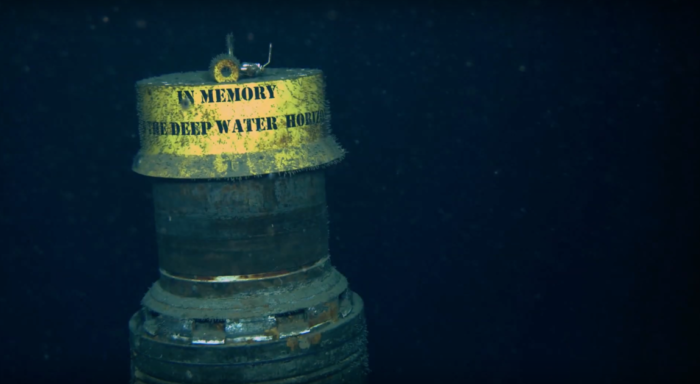The yellow cement cap on the Deepwater Horizon wellhead appears to be covered in oily marine snow seven years after the blowout.
The yellow cement cap on the Deepwater Horizon wellhead appears to be covered in oily marine snow seven years after the blowout.
Sea cucumbers, giant isopods and whip corals, normally found on the sea floor, are nowhere to be seen. Crabs appear to have blackened shells and exhibit sluggish behavior.
Those are among the images of the sea floor in a video taken by a remote-operated vehicle at the site of the Deepwater Horizon spill, released last week by the Louisiana Universities Marine Consortium, usually known as LUMCON.
The video was taken in 2017-seven years after 4 million barrels of oil gushed into the Gulf of Mexico from the Macondo wellhead – by researchers assessing the recovery of the deep sea.
Mark Benfield, a professor of oceanography and coastal sciences at LSU, led monitoring of visible marine animals, called megafauna, for about a year after the Deepwater Horizon spill. He found the lack of vitality seen in the video “disturbing.”
The video offers the first glimpse of the site since visual inspections ended in 2011.
“Given the amount of time that’s passed, I figured that the site would look normal or well into recovery,” Benfield said. “I was surprised.”
LUMCON researchers published a study in August about the health of the site. The study, in the journal Royal Society Open Science, found that crabs and shrimp appear to be drawn to the site, possibly in response to chemicals they mistake for sex hormones or food.
The video and study were only possible because researchers were near the site for an unrelated project.
No one is funding research into the impact of the Deepwater Horizon spill on the surrounding sea floor, said Craig McClain, director of LUMCON. Getting money for deep sea research can be difficult because it’s “out of sight, out of mind,” he said.
But damage to the sea floor ecosystem can permeate through the food chain to commercial fisheries and disrupt the process by which oceans pull carbon from the atmosphere and store it in the deep sea.
Benfield believes more funding should go toward studying the deepest areas of the Gulf of Mexico.
“I think that a lot of money is being spent on restoration. In the deep sea, we don’t understand the system well enough to be able to restore it,” he said. “My feeling is that in lieu of restoration, monitoring is a valid alternative.”
Email notifications are only sent once a day, and only if there are new matching items.
News Tips:[email protected]
Other questions:[email protected]

Be the first to comment on "Gov. Evers considering more money for Milwaukee to combat reckless driving"